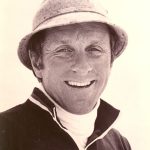The Kobe Bryant case: When the circus came to the Vail Valley
Looking back on a sexual assault case that never went to trial but was never forgotten

Bret Hartman | Vail Daily file photo
More than a decade and a half ago, Kobe Bryant came to the Vail Valley quietly. Fourteen months later, he left the same way. In the middle was … well … a media circus.
That 14-month legal odyssey for the NBA superstar became the most challenging piece of the story to include — or not — on Sunday when the shocking news broke that Bryant, 41, had been killed in a helicopter crash, along with his 13-year-old daughter, and seven others on board.
Covering the story, journalists and commentators struggled with how to accurately portray Bryant’s life and his myriad achievements while also acknowledging, or avoiding, the ugliest part of his past.
The circus arrived in the Vail Valley in the summer of 2003 after Bryant was accused of sexually assaulting a 19-year-old Eagle woman. She was working a summer job at The Lodge and Spa at Cordillera. He was staying there, awaiting knee surgery the next day in Vail. When the story broke, she faced a vicious backlash for the next year and a half, hounded by paparazzi, tabloids and mainstream media that sometimes behaved like tabloids.
As the spotlight glared, District Attorney Mark Hurlbert and defense attorneys Pamela Mackey and Harold Haddon waged a titanic legal battle. They filed what was, at that time, a record number of motions and countermotions for a criminal case.

Support Local Journalism
Bryant, his accuser, and several others testified for themselves and against each other during the numerous hearings leading up to the trial, all closed to the public. On the eve of what would be a very public trial, Bryant’s accuser said she could not go through with it. Hurlbert pulled the plug.
Circuses travel. When the case was dropped, much of the media packed its tents and hot-footed it to Los Angeles for Michael Jackson’s criminal trial on charges of molestation.
Bryant apologized to his accuser, who had sued him in federal court. The National Center for State Courts says only about 3% of civil cases make it to trial. This one didn’t either. Bryant and his accuser settled out of court in March 2005 and went on with their lives.
Picking up his cross
If one woman brought Bryant low for his alleged behavior, another resurrected him. Mackey, Bryant’s high-powered defender, strides through courthouse metal detectors on her way to battle almost every day. The Eagle County Justice Center was no different.

Daily file photo
Bryant quickly learned to carry nothing that would set off an alarm. In keeping with her character, Mackey led the way into the building. When Bryant reached into his pockets, he came out with nothing more than a small wooden cross. He placed it gently in the bin for the X-ray machine, looking up at Mackey as she walked quickly past the gaggle of reporters and gawkers toward her courtroom battlefield. Bryant took up his cross and followed her.
A cottage industry
Americans are capitalists by nature. One local attorney paid off law school debt while working the case.
Several landlords around that end of Eagle’s Chambers Ave. leased space to national media companies. The going rent rate reflected the financial physics — “whatever the market will bear.” The market would bear more as winter approached and reporters clamored to be inside.

Kobereflections-VDN-012920-2
As the trial date approached in the fall of 2004 and the media circus reached its fevered pitch, a group of fit young people hung around the courthouse passing out condoms that came with consent forms, asserting that if Bryant had used their products, he would not have been in this mess.
Life correction
Bryant was 25 in 2003 and 41 when he died Sunday. His daughter Gianna died with him. She was 13.
We often treat celebrities differently, and Bryant’s death became a huge national story that, momentarily, made many remember his time in Eagle County. Seven others died in the crash, sending shockwaves through their worlds: Orange Coast College baseball coach John Altobelli; John’s daughter Alyssa and wife Keri; Christina Mauser, an assistant girls basketball coach at Harbor Day School in Corona del Mar, California; Sarah Chester and daughter Payton Chester and pilot Ara Zobayan.
Covering the breaking story Sunday, some journalists opined that Bryant was no saint. Aaron Ross Cole called Bryant, “America’s Imperfect Icon.”
Yes, Bryant died too young, but he lived long enough to change his life after coming close to possibly wrecking it as a young man. Writing for Esquire, Charles Pierce borrowed from Jim Carroll’s autobiographical novel, “The Basketball Diaries,” writing: “Kobe Bryant died on Sunday with one of the young women in his life, and how you will come to measure his life has to be judged by how deeply you believe that he corrected his grievous fault through the life he lived afterward, and how deeply you believe that he corrected that fault, immediately and beautifully, and in midair.”










